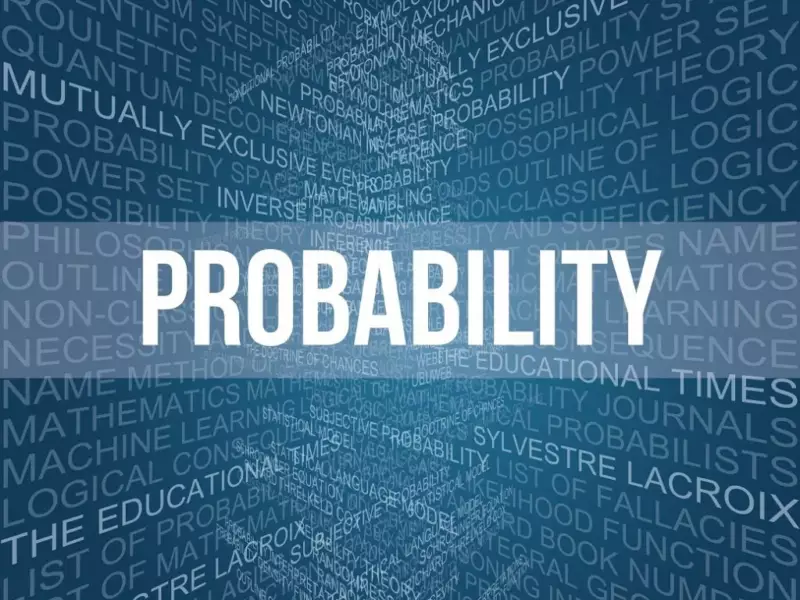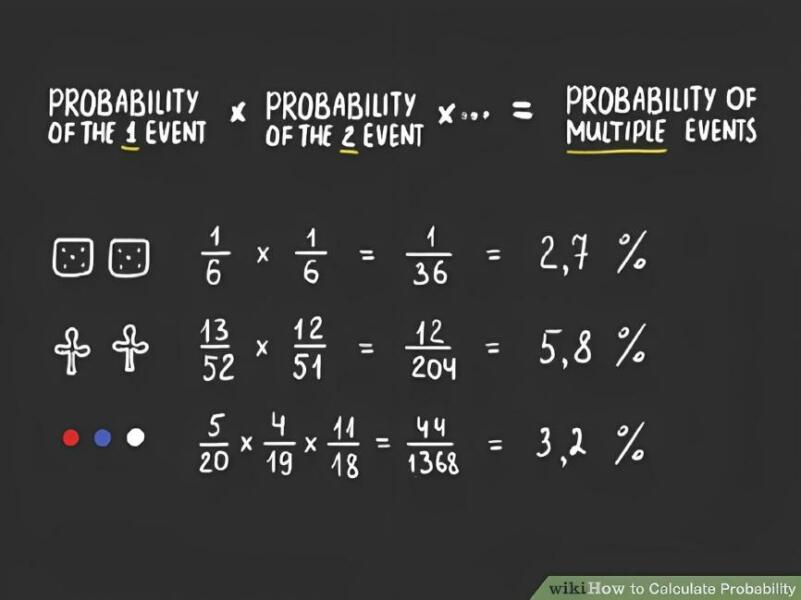Probability is a concept that you have probably already come across. But what precisely is it, and how to find probability? The probability of an event occurring, such as winning the jackpot or rolling a six on a die, is known as probability. The probability formula makes it simple to determine the probability (the number of favorable outcomes divided by the total number of outcomes). This post will show you exactly how to use the probability formula step-by-step. Plus, provide some instances of how to find probability. So, continue reading further to know more!
Finding The Probability of a Single Random Event
Want to know how to find probability of a single random event? Then, read further!

- Choose an event with mutually exclusive outcomes.
The only way to calculate the probability is when the event whose probability you’re evaluating either occurs or doesn’t. The event and its opposite cannot take place simultaneously. Examples of situations in which two mutually exclusive outcomes include rolling a 4 on a die and a specific horse winning a race. The horse either succeeds or loses, or either a 4 die rolls or doesn’t.
- Using the statement, “Both a 2 and a 4 will come up on a single roll of a die,” for instance. It would be difficult to determine the probability of the event.
- Define all possible events and outcomes that can occur.
Say your goal is to determine the probability of rolling a 5 on a 6-sided die. The action is “rolling a 5,” and there are six possible results as we know that a 6-sided die can land on any one of six numbers. As a result, we know that there are 6 potential outcomes in this scenario and 1 conceivable event. Here are 2 additional illustrations to state:
- Example 1: When picking a day of the week at random, what are the odds of selecting a day that falls on the weekend? Our event is “choosing a day that falls on the weekend,” with seven possible outcomes, representing all the days in a week.
- Example 2: There are 21 white marbles, 7 red marbles, and 2 blue marbles in a jar. What is the possibility that the marble will be red if one is randomly selected from the jar? Our event is “picking a red marble,” There are 30 possible outcomes, which equals the total number of marbles in the jar.
- Divide the number of events by the number of possible outcomes.
We will then have the likelihood of a single event occurring. The number of events and outcomes when rolling a 5 on a die is 1 (there is only one 5 on each die). Further, the number of outcomes is 6. Alternatively, you could write this relationship as 1÷6, 0.166, 1/6, or 16.6%. See the examples stated below for more clarification:
- Example 1: When picking a day of the week at random, what are the odds of selecting a day that falls on the weekend? The likelihood is 2 ÷ 7 = 2/7. Alternatively, you could write this as 0.285 or 28.5%. Because there are two weekends per week, there are only two events and seven outcomes.
- Example 2: There are 11 white marbles, 4 red marbles, and 5 blue marbles in a jar. Because there are five red marbles, there are five occurrences and twenty possible outcomes. What is the likelihood that the marble will be red if one is randomly selected from the jar? The likelihood is 1/4 or 5 times 20. Alternatively, you could write this as 0.25 or 25%.
- Add up all possible event likelihoods to make sure they equal 1.
All potential outcomes must have a cumulative likelihood of 1, or 100%. You’ve probably made a mistake because you missed out on a potential event if the likelihood of all conceivable events doesn’t equal 100%. Check your calculations again to be sure you didn’t leave out any potential results.
- Represent the probability of an impossible outcome with a 0.
To illustrate, if you were to determine the likelihood that Easter would happen on a Monday in the year 2020. The likelihood would be zero. It is so because Easter is always on a Sunday.
Calculating The Probability of Multiple Random Events
Till now, we have studied how to find probability of a single random event. Now, moving ahead to how to find probability of multiple random events.

- Deal with each probability separately to calculate independent events.
These probabilities will be calculated individually once you have determined what they are. Consider the scenario where you wanted to determine the likelihood of rolling a 5 twice in a row on a 6-sided die. You are aware that there is a 1/6 chance of rolling a 5. And that the same die also has a 1/6 chance of rolling another 5. The first result does not affect the second.
- Consider the effect of prior events when calculating the probability for dependent events.
You can tell if an event is dependent if the chance of it happening changes due to the first event. Further, it will have an impact on the cards that are available when you select the next card. For instance, if you select two cards from a deck of 52. When computing the probability of the second event in a pair dependent on the first, you must deduct one from the total number of outcomes.
- Multiply the probabilities of each separate event by one another.
You can compute the total probability by multiplying the probabilities of the individual events by one another, regardless of whether you’re working with independent or dependent events and whether there are 2, 3, or even 10 possible outcomes. You’ll receive the likelihood that certain occurrences will take place one after the other as a result. Therefore, under the given circumstance, what is the likelihood of rolling two consecutive fives on a six-sided die? Each occurrence has a 1/6 chance of happening. 1/6 × 1/6 = 1/36 is the result. Moreover, 0.027 or 2.7% are other ways you could put this.
On A Wrap
If you don’t know how to find probability or lack in the same, then this article is a must-read for you. Here we tried to mention a step-to-step guide on it. So, give it a complete read!
Also read: Learn The Top 10 Tips to Excel in The MyMathLab Coursework





